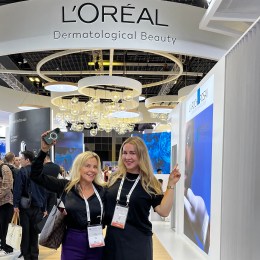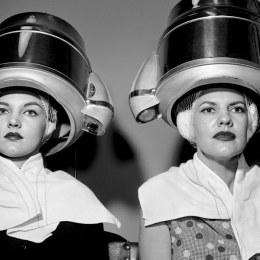Clients could be undoing all your good work with the way they treat their skin at home. Emma Hobson* explains the importance of protecting the surface from invasion.
You might not be able to see it from the moon nor with the naked eye, but one of the greatest walls ever built is that of the barrier function of the skin.
This amazing feat of skin engineering means we have a strong, resilient “wall” protecting our body from harsh environmental elements, helping to retain moisture and keeping and allergens out.
The barrier function is designed in the same manner as that of a wall, consisting of:
- The bricks: the dead, dry skin cells which are soon to be shed
- The mortar: composed of lipids (ceramides, essential fatty acids and cholesterol)
Sometimes the structure of this “brick wall” is compromised and gaps can appear due to the lack of epidermal barrier lipids. As a result, our skin is susceptible to dehydration due to moisture escaping (Trans Epidermal Moisture Loss – TEML), and increased skin sensitivity as microbes and allergens now have a path of entry into the skin.
There are many causes for the breakdown of this protective barrier, the most common being:
- The environment: eg. cold, windy weather, air- con, heating, the sun, plane travel
- Poor skin care: eg. using harsh, stripping products like SD alcohol or soap, excessive exfoliation, water that is too hot, or not wearing a moisturiser
- Diet: eg. excess alcohol, caffeine and salt consumption, not eating sufficient Essential Fatty Acids, insufficient water intake
- Stress itself can disturb the barrier function by slowing down synthesis of epidermal lipids
- Excessive sweating
- Smoking
- Certain medications (such as nasal decongestants), general anaesthetic, cancer therapies
An impaired barrier function means the skin appears dull and lacklustre. It can feel taught and flaky with fine lines are around the eyes, over the forehead and cheeks. When pinched between the fingers, it will resemble a piece of parchment paper.
Sadly, the barrier function declines with age as oil gland activity decreases, the skin’s natural hydrators decline as does its ability to regenerate these important lipids.
The prolonged dehydration in the lower level of the skin can cause the depletion of the dermal tissue resulting in deeper wrinkles, elastosis and sagging skin.
There is much one can do to re-establish a good barrier function, such as:
Exfoliation. This step is important to prevent the skin from feeling dry, rough and aky and it will help eradicate any dry patches. The key is not to use an aggressive exfoliant that causes any skin sensitivity or irritation. I’d recommend exfoliating boosters that are easily applied under the moisturiser and work gently throughout the day. There are also slightly stronger forms of exfoliations such as hydroxy acid which can generally be used once or twice a week.
To boost the moisture and restore plumpness in the skin, apply layers of a hydrating serum, toner, moisturiser and primer (the skin responds well to layering). The moisturiser doesn’t need to be heavy or contain a lot of oil (as the skin is lacking moisture, not oil). I’d recommend a medium weight moisturiser with SPF30+.
If skin is tight and flaky, use an anhydrous (water-free) moisturiser made with skin-protecting silicones. This will seal in moisture and prevents the skin from drying out, whilst also helping to repair the barrier function. At night, look at applying an oil-based serum or night oil to the areas of dry skin.
For an added boost, apply a hydrating gel mask once a week, ensuring it’s applied close the corners of the nose, mouth and eyes to target these vulnerable areas.
Though drinking water is important, it doesn’t correlate directly to having hydrated skin. It’s better to encompass products that hydrate the skin and protect your barrier function by preventing moisture loss.
Some fantastic ingredients which I’d recommend to use within an entire skin care regimen are:
- Hyaluronic Acid: one of my favourite ingredients as it has the ability to hold 1000 times its own weight in moisture.
- Niacinamide: a potent form of vitamin B3 with a multifunctional approach to treating dehydration. It addresses several aspects of dryness and dehydration simultaneously, thus protecting the skin from TEML.
- Essential fatty acids: evening primrose oil, borage seed oil, shea butter, jojoba oil, coconut oil. A great ingredient to combat dry skin is betaglucan.
- Omega-6 EFAs: required in forming the skin’s barrier function and its structural integrity
- Sodium PCA: a terrific humectant which binds moisture to the skin
- Salicornia Extract: a plant extract that helps reinforce the Natural Moisturising Factor (NMF)
- Algae Extract: nutrient rich to restore skin’s moisture
- Tomato Seed Oil: a great source of lycopene-rich lipids that help restore the barrier lipids of the skin
- Bambusa (bamboo) Vulgaris and Pisum Sativum (pea): help stimulate HA formation for increased hydration and elasticity
- Glucosamine: helps stimulate HA formation
It’s important to avoid soap and soap-based cleansers and body washes as the alkalinity dries the skin and causes sensitisation. I’d also recommend avoiding SD Alcohol and hot water, as both are very drying to the skin.
And finally, don’t forget to feed skin by including plenty of Essential Fatty Acids in the diet!
* Emma Hobson is Education Manager Asia Pacific, The International Dermal Institute



